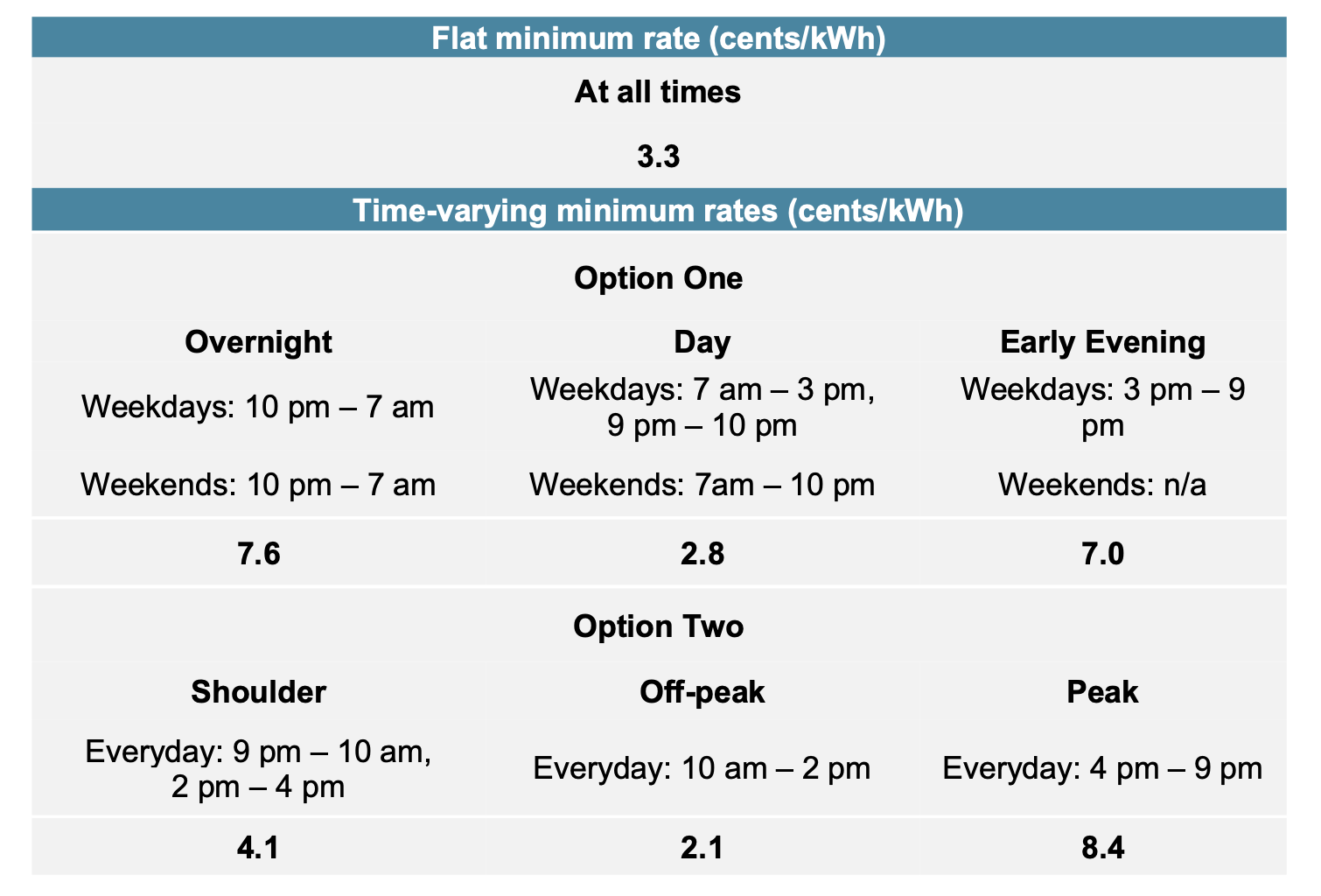Smart Meters are coming
The Australian Energy Market Commission (AEMC) is officially starting its Accelerating Smart Meter Deployment (ASMD) reforms. If you don’t already have a smart meter, you will by the end of 2030.
It's official - solar FiT will be going even lower for Victorian households from 1 July 2024.

The Victorian Essential Services Commission sets the minimum allowable feed-in tariff for solar households in Victoria. In a change previously signalled in the Draft Decision, Victorian solar households will have a lower feed-in tariff from 1 July 2024.
We've previously reported on the Draft Decision for FiT reductions for Victorian solar households, and the final determination is that some rates will be even lower than first proposed in the Draft Decision - the lowest possible rate of 2.1 c/kWh for off-opepeak variable FiT remains the same, but the highest rate in the final determination of 8.4c kWh for peak times is lower than the initial 8.8 c/kWh under the draft.
All retailers with a minimum of 5,000 customers are obliged to pay eligible customers at least the minimum feed-in tariff when those customers export energy into the grid. They can choose to pay higher feed-in tariffs if they wish.
'Eligible customers' are those who have a generation facility with a total output of less than 30 megawatts.

It's interesting to note the themes reported by the ESC in response to teh draft decision to reduce FiT for Victorian households. This year, the ESC reports having received submissions from 15 solar customers, 2 community solar groups, and energy retailer and an energy distributor.
Unsurprisingly, the main theme among solar customers is that solar FiT is already too low, that this is exacerbated by increases to consumption rates, and that solar FiT should be equivalent to the consumption rates charged by retailers.
One solar customer said:
Implement a new methodology with the guiding principle that the feed-in tariff should be same as the retail rate or as close to it as possible.
Another said
Feed-in tariff should be a percentage of the kilowatt charge. That way if your prediction that charges will drop is wrong and charges rise so will the feed -in tariff. Feed-in tariff maintains parity. A percentage rate of 25% would be appropriate.
AusNet Services, which owns the distribution network serving all of eastern Victoria, made a submission stating that energy consumers do not fully understand the issues around minimum FiT:
Our research shows there is a lack of understanding among customers around the feed-in tariff including who decides the value and how, and whether the feed-in tariff provides more value compared to self-consumption.
Savings as a Service is the blog site and newsletter from Bill Hero. Subscribe now and get your energy savings tips and information delivered fresh to your inbox every month.